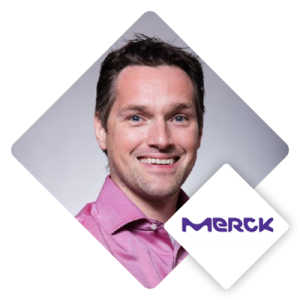KEYNOTES

Anne van de Poel
Supply chain and IBP director for Bonduelle Northern Europe
Anne is Supply chain and IBP director for Bonduelle Northern Europe and is part of the leadership team. Over the past 10 years she has been working in local, regional, and global Supply chain roles for Bonduelle and Mars Wrigley and has developed a broad end to end perspective.
She combines this with 10 years of sales experience at Mars and Coca-cola. She is a visionary leader that is driven by change and breaking down silos to deliver business results.

Christopher Schmidt
Head of Integrated Business Planning at Merck Life Science
Christopher joined Merck Life Science in 2023 as Head of Integrated Business Planning from Merck Healthcare, where he was recently responsible for Supply Chain Network Operations in Europe, Middle East, Africa & Russia. He brings more than 15 years of strong leadership experience in Merck's manufacturing and supply chain sector, working for the organization in Germany, Venezuela, Mexico, and Brazil. He holds a Master's degree in International HR and Globalization from the University of Leicester (U.K.) and university degree in Business Administration, Finance & HR from the Frankfurt University of Applied Sciences.

Moderator Bram Desmet
Professor Vlerick Leuven Gent Management School
Author of ‘Rethinking Supply Chain’
S&OP/IBP is broken and it cannot be fixed
According to Bram Desmet, a planning concept like Sales & Operations Planning (S&OP) is not going to solve the gap between Finance, Sales and supply chain: “Companies run aground with S&OP because the concept has fundamental flaws. Supply Chain makes a statistical forecast and then asks sales if they want to validate it, purely because then they themselves can order their materials on time and reserve capacity. But there is no benefi t to sales from doing this. They have their own planning and targets, just like finance.” Companies should capture the different internal orientations towards risk: opportunistic by sales, conservative by fi nance, and realistic by supply chain. Food for thought in the panel discussion.

Moderator Jonathon Karelse
Operations Leader, HBR Advisory Council,
Author of ‘Histories of the Future'
The added value of Forecast Value Add
Jonathon Karelse is very explicit about the optimal forecasting model. “Some people love nothing better than coming up with the ultimate optimally mathematical forecasting model. But to me, forecasting is nothing more than an enabler to help your company meet its financial goals. I always ask people who are constantly trying to improve the reliability of their forecasts ‘How much money do you think you can save by doing that?’. In other words, unless you know how a better forecast will benefit your company financially, I wouldn’t bother spending any energy on it.” Food for thought in the panel discussion.
More recordings of previous editions of S&OP Flavour Day are available on the YouTube channel of Supply Chain Movement:
